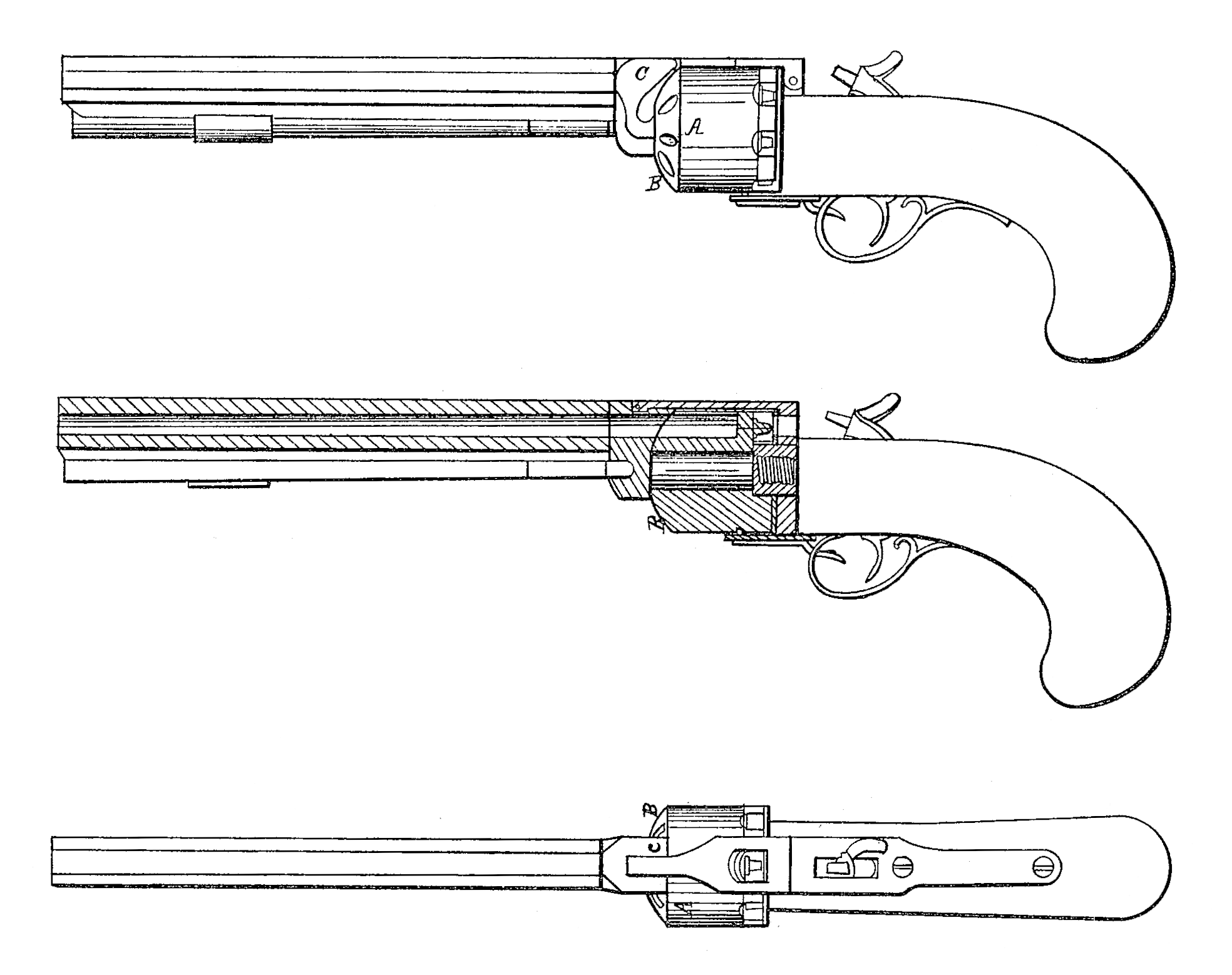US 182
UNITED STATES PATENT OFFICE.
DANIEL LEAVITT, OF CABOTVILLE, MASSACHUSETTS.
IMPROVEMENT IN MANY-CHAMBERED-CYLNDER FIRE-ARMS.
Specification forming art of Letters Patent No. 182, dated April 29, 1837.
To all whom it may concern:
Be it known that I, Daniel Leavitt, of Cabotville, in the county of Hampden and State of Massachusetts, have made an Improvement in Fire-Arms of that kind which have a revolving many-chambered breech, having its axis of revolution parallel with that of the barrel of the piece, and which improvement is equally applicable to rifles, carbines, pistols, and all arms of an analogous character; and I do hereby declare that the following is a full and exact description thereof.
The revolving cylinder which I use does not differ from such as have been previously employed in various many-chambered guns. The chambers are usually seven in number, which are made to coincide with the bore of the barrel by revolving the chamber by hand, there being a catch, governed by a trigger and spring, for disengaging and stopping it at the proper period. To discharge the piece I employ percussion-caps, which are placed upon nipples and are struck by the hammer directly in a line with the axis of the barrel, as is practiced in many cane rifles and pistols, and to which arrangement I make no claim.
The improvement which I have made consists in giving a convex form to that end of the revolving cylinder which is in contact with the barrel. I sometimes make it in the form of a hemisphere. It, however, may be a curve of a larger radius than that of the semi-diameter of the cylinder; but in all cases it is best that it should approximate to a hemisphere, as the security from accidental discharge which results from this convexity is then most perfect. It has heretofore been the practice to terminate such cylinders with flat ends and to fit the back end of the barrel thereto as nearly as is consistent with a free revolution of the cylinder, and in this case the small portion of the charge which escapes through this joining passes directly over the mouth of the contiguous chambers, frequently occasioning their accidental discharge. In my fire-arms the back end of the barrel is of course adapted to the convex termination of the cylinder, fitting there to as closely as is consistent with freedom of motion. The portion of the ignited charge which may escape will in this case fly off in a tangent to the spherical end of the cylinder, and cannot possibly come into contact with a lateral-charged chamber. The same principle will govern and a similar result be produced, although less perfectly, by giving a conical form to the chambered end of the cylinder.
What I claim as my improvement is—
The giving to the chambered or forward end of the cylinder a convex form by which the ignition of the charge in a chamber contiguous to that which is being fired is prevented, upon the principle and in the manner herein set forth.
DANIEL LEAVITT,
Witnesses:
Thos. P. Jones,
Geo. Elgin.

